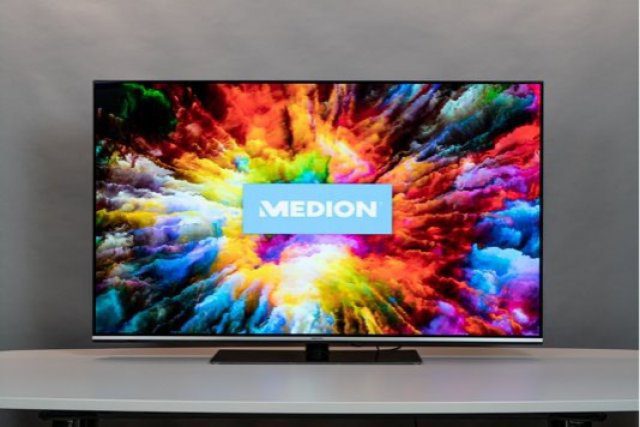Image quality: That’s what the technical measurements say
The differences are already great when it comes to color reproduction. Because not all televisions are calibrated correctly from the factory. This manifests itself in a distorted display of colors, for example when skin tones appear reddish, the image has a bluish cast, or a European coniferous forest glows green like the Hulk’s skin. The user can then laboriously experiment with color settings, professionals use measuring instruments and programs to perform the perfect calibration themselves.
The LG B2 (OLED55B29LA), the Panasonic LXW944 and the Samsung QN95B have near-perfect color fidelity out of the box. With an average Delta E of 1.4 (LG and Panasonic) and 1.6 (Samsung), the colors barely deviate from the original. To explain: the lower the value, the better. They achieve the very good result in Cinema Expert (LG) and Filmmaker (Samsung and Panasonic) modes. All other modes bring out paler or brighter colors, a cooler white, or a brighter image, but distort the color representation. OK’s economic model was dead wrong with a dE of 6.9. A sad desert landscape with brownish-yellow hues in Mad Max looks like a bright yellow rapeseed field. The Medion TV shows slight deviations that make the picture appear bluish (dE 2.97).
The color space in detail
In addition to color fidelity, color space is also crucial. The first is the ability to display colors accurately, the second is to be able to display as many colors as possible. The classic rec.709 color space is sufficient for old movies, television, and many games. Almost all televisions cover about 98 to 99 percent. The extended DCI-P3 color space is challenging. Particularly bright and eye-catching colors are used in HDR content. The Rec.2020 color space is even larger. Acted as the color space of the future, even the most modern televisions never fully cover it.
The LG model, for its part, dominates the DCI-P3 colors at 97% and Samsung at 95%. The cheaper Panasonic LXW944 achieves a good 87.5%, Medion beats it slightly with 89.3%. The test lab could not attest to an extended color space for OK’s 55950UC-TAB OLED. In return, it scores with a high contrast ratio of 4,879:1. At 7672:1, Samsung gets a lot out of the LCD panel, but it lags behind TVs from Medion and LG, which offer deep blacks and very high contrast thanks to OLED technology. The Panasonic LXW944 shows none. The black appears slightly grayish, it reaches a brightness of 0.6 candelas per square meter (cd/m²) in the measurement – the value for OLEDs is 0 cd/m².

Introvert. Beer guru. Communicator. Travel fanatic. Web advocate. Certified alcohol geek. Tv buff. Subtly charming internet aficionado.

